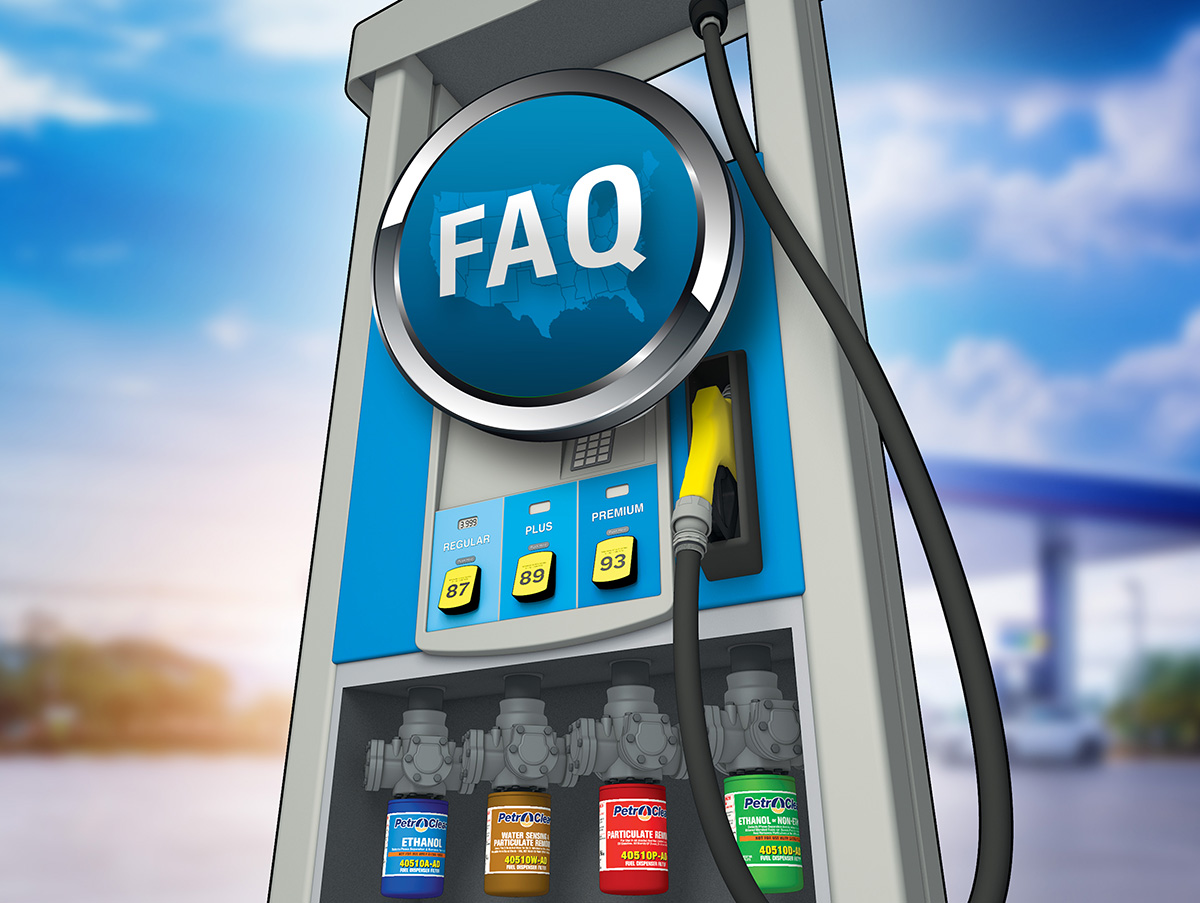Dispenser Filter Regulations In My State – 6 Frequently Asked Questions

To help fuel site operators cultivate a greater understanding about how dispenser filter regulations are created, communicated and enforced, PetroClear has developed this short FAQ. Please visit our State-by-State Guide to Dispenser Filtration Regulations for information about individual state requirements.
Q: How are dispenser filters regulated?
Each individual state sets its regulations for dispenser filtration. Some states establish their own code, others require fuel site operators to follow NIST Handbook 130, while others do not have a legal standard specific to dispenser filtration.
Q: When it comes to regulating operational standards for fuel dispensers, two documents are frequently referenced as authorities on the subject – NIST Handbook 130 and NIST Handbook 44. What is the difference between these two publications?
NIST Handbook 130 publishes regulations about metrology and fuel quality, including standards for dispenser filtration. NIST Handbook 44 covers technical requirements for weighing and measuring devices, including standards for dispenser totalizers, displaying prices and transactions, and accuracy classes and tolerances for flow rates. Dispenser filtration standards are NOT specifically addressed in NIST Handbook 44. However, NIST Handbook 44 does require that “a device shall be installed in accordance with the manufacturer’s instructions, including any instructions marked on the device.” All states either adopt NIST Handbook 44 annually or follow earlier versions as part of their regulations related to weighing and measuring devices.
Q: Several states follow the standards in current and previous editions of the NIST Handbook 130. What dispenser filter requirements are included in the 2018 NIST Handbook 130?
The 2018 version of the NIST Handbook 130 states that “all gasoline, gasoline-alcohol blends, gasoline-ether blends, ethanol flex fuel, and M85 methanol dispensers shall have a 10 micron or smaller nominal pore-sized filter. All biodiesel, biodiesel blends, diesel, and kerosene dispensers shall have a 30 micron or smaller nominal pore-sized filter.”
Q: Sometimes an administrative state agency cites that it has its own code and that it also follows NIST Handbook 130. Which guideline represents the standard that is enforced?
State codes supersede NIST Handbook 130. Although in many instances, standards in NIST Handbook 130 inform the standards for state codes. Please refer to our State-by-State Guide to Dispenser Filter Regulations for information specific to individual states.
Q: What are the penalties for failing to meet the minimum standards for dispenser filtration?
They vary from state to state. Some states issue civil penalties for dispenser violations, while others might render a dispenser “red tagged” or “off sale.” In many cases, penalties are reserved for unsatisfactory fuel quality readings. In this case, dispenser filters are not typically the root cause of the violation. That being said, properly maintained dispenser filters can prevent the root problem (usually excessive contamination) from escalating into a violation prompted by a consumer complaint.
Q: Are there other penalties outside the scope of a regulatory agency’s enforcement capabilities?
Yes. Many dispenser manufacturers include dispenser filtration requirements in their operating instructions. Failure to follow those requirements can void the dispenser warranty.
The PetroClear Team has decades of experience in dispenser filtration requirements. For assistance meeting your state or dispenser manufacturer’s requirements, please reach out to your Local PetroClear Representative.





